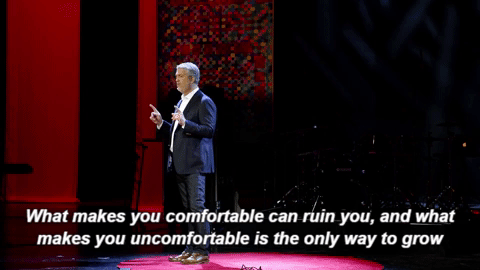The Evolution of Employee Motivation Methods

We’ve all done it. We’ve sat everybody down and explained. And almost nobody understood or acted upon our very informative explanation.
“Why don’t they just listen?” we ask ourselves. “Why are they still doing X when clearly we have to learn to Y if we’re going to succeed?” And on it goes.
The fault is not in the strategy. And it’s not in the intelligence of your team. The problem is that they didn’t think of it themselves — they haven’t had that “aha” moment that would help them contribute their piece of the puzzle.
When people solve a problem for themselves they get a rush of neurotransmitters. They understand the “why.” And they get that by solving the puzzle themselves.
What Research Tells Us About Leadership Styles
In an age of accelerating change and the relentless market requirement for adaptation, “Command and Control” does not work. There’s too much power at the top, and an organization cannot move quickly enough. Team members’ creativity and problem solving ability is not engaged and decision-making bottlenecks are prevalent. This contributes to what we call Critter State.
David Rock and Jeffrey Schwartz’s research into how breakthroughs can be applied to make organizational transformation succeed show that:
Behaviorism does not work—the carrot and the stick (rewards and punishments) approach may work for a short time but it does not yield the intrinsic motivation that creates innovation and sustainable results. The carrot raises the anxiety level for non-performers (creates Critter State), while people who are already performing are not stretched. The stick focuses attention on behaviors that don’t work and on the situations that preceded them.
Even humanism is proving to not work very well. When managers are “too nice,” too personally involved with the problems of their people the leader often falls into the Rescuer role in the Tension Triangle. This ultimately disempowers people. Like the carrot and the stick, it focuses too much attention on what is wrong rather than on how to solve the problem.
So What Works?
Empowerment and motivation happen when people solve their own problems, and create their own aspirations and expectations–that’s why the “outcome frame” tool is so powerful. Organizationally we want to have:
- Inquiry over advocacy (use the Outcome Frame!)
- Team strategy and problem solving meetings – meet to do the work not talk about it
- Creation of own goals and plans
Have you ever had the kind of experience where there was just enough debate to create a shared understanding, where everyone knows the agreed action plan–even how to cope with curve balls? Things then proceed in a flow state.
This empowered state of high level thinking and problem solving is called “meta-cognition”. It’s when people ask themselves questions like “Why am I doing this?” This is a frontal lobe, “Smart State” brain activity. This is the state everything we are doing as leaders needs to lead to.
Our brains don’t like change. Whether logical or not, it registers as an “error message” and feels physically uncomfortable or even painful.
So the “a-ha” experience is not enough. There have to be systematic ways to trigger new behaviors if you want habits to change. There have to be systematic ways to focus attention on the desired behavior and goal.
Try This Exercise
Get everyone together to actually solve the issue. When having this kind of meeting use one computer (project the screen) and take turns “driving” (typing). Don’t stop until you’re done. No to-do lists, no need for accountability tracking…it’s done and everyone participated. If someone can’t be present they can e-mail their ideas beforehand, or participate virtually. It’s on them to find out the results of the meeting.
Once you’ve got the technique down, try it on something big. Like strategy. Working out the strategy at ground level helps people understand how their role fits into the big picture. They understand the Why. They solve the big puzzle and a firework of neurotransmitters will go off in their brain as they see how their piece fits.
And that’s what we all want.
Christine Comaford of SmartTribes Institute applies the latest neuroscience research to help companies build vibrant engaged culture, rich and committed leadership, consistently compelling sales and marketing.



